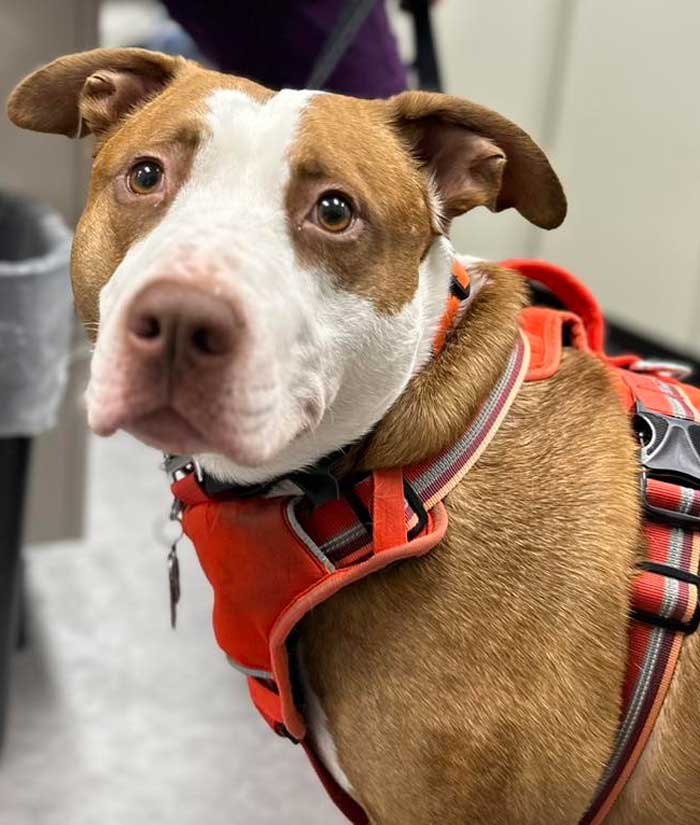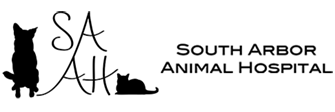Surgical FAQs
South Arbor Animal Hospital's Superior Surgical Standards
At South Arbor Animal Hospital we strive to take the very best care of each and every pet we see. We know leaving your pet for surgery, whether routine or emergent, can be stressful and worrisome for both you and your beloved companion. That’s why you can count on South Arbor to provide comfort, compassion, and quality care throughout your pet’s entire stay. Below is a list of extra precautions we take in order to ensure your pet’s health and safety while undergoing any anesthetic procedure.
Pre-surgical Exams:
Our veterinarian will conduct a thorough nose to tail exam if your pet hasn’t been seen by her in the past 30 days.
Pre-Anesthetic Lab work:
Required in dogs and cats over the age of one year. This blood work checks liver and kidney enzymes, blood sugar and total protein. Knowing these values helps us choose the best and safest anesthetic protocol for your pet.
Intravenous Fluids:
Required for all surgeries except for feline neuters. This precaution keeps your pet hydrated, allows your pet to metabolize the anesthesia more safely and quickly, as well as gives us the ability to help stabilize blood pressure while he/she is under anesthesia.
Surgical Monitoring:
Temperature, Pulse, Respiration, Blood Pressure, EKG, CO2, and SpO2 (oxygen content of the blood) are all monitored closely during surgical procedures.
Recovery:
After your pet has been taken off of anesthesia, a technician or doctor remains by your pets side until he/she is extubated (endotracheal tube is removed). Your pet is then checked on, taken outside (if applicable), given food/water and medicated throughout the remainder of their stay. They are also given a lot of extra love and attention from the staff, to ensure the most pleasant visit possible.
Dropping Off Your Pet for Surgery:
We ask that you do not feed your pet after midnight the day of surgery (water is permitted during this time). You will be asked to sign an estimate at the time of drop-off as well as the Anesthesia and Surgical Consent Form which can be found on South Arbor’s website.
Picking Up Your Pet After Surgery:
After the surgical procedure, a doctor or technician will contact you via phone to let you know how surgery went and how your pet is recovering. They will also give you a more accurate time as to when your pet can be picked up (usually before 5pm). At the time of pick-up, a technician will go over discharge instructions, including medicine administration and incision site/wound care. Please feel free to ask any questions you may have at this time.
Answers to common questions after your pet returns home following surgery:
Appetite
Decreased appetite can occur after surgery. There are several things you can try:
- Offer favorite foods
- Warm the food slightly above room temperature to increase the odor and taste
- Some pets like low-fat cooked chicken, turkey, or ground beef with rice. A bland diet may help entice your pet’s appetite following surgery.
If your pet’s appetite is not normal the day after surgery, or if your pet is not drinking water, is vomiting, or seems lethargic, please call our office for further instructions.
Bandage, cast, or splint is wet, soiled, or off
If the bandage becomes soiled, damp, chewed, or chewed off, please do not re-bandage at home. Duct tape and other items can trap moisture within the cast or bandage causing inflammation of the skin and tissues. In some cases, bandages inappropriately applied at home can even cut off the circulation to a limb! Call us immediately if you have concerns about your pet’s bandage. Please also call us if you notice swelling of the exposed toes on the bandaged limb, which can be seen by spreading apart of the toenails. Confine your pet to a single room or similar small area until you can call us and we can advise you as to whether the bandage needs to be replaced. After a cast or splint is first removed, it may take 1-2 weeks for your pet to become accustomed to using the leg without the splint.
Constipation, bowel movements
Difficulty having bowel movements can be expected after illness, anesthesia, or surgery. It may take a few days for the gastrointestinal system to return to normal function. Fortunately, it is not vital for your pet to pass a stool on a regular daily basis. Please call if your pet has not passed a stool within 48 hours of discharge from the hospital or appears to be straining to defecate.
Crying/whining
Although vocalizing can indicate discomfort, it can also be associated with other feelings following surgery. Often, pets vocalize due to the excitement or agitation that they feel on leaving the hospital and returning to their familiar home environment. Some pets will also vocalize or whine as the last remaining sedative or anesthetic medications are removed from their systems, or in response to the prescribed pain medication. If crying or whining is mild and intermittent, you may simply monitor the situation. If vocalization persists, please call us for advice. In some cases, a sedative may be prescribed or pain medication may be adjusted.
Diarrhea
Diarrhea may be seen after hospitalization. This can be caused by a change in diet but is more commonly caused by the stress of being away from home. Certain medications prescribed to your pet may also cause diarrhea. If the diarrhea is bloody, lasts longer than 12-24 hours, or if your pet becomes lethargic or vomits, please contact us immediately. You can purchase a nutritionally complete bland food from us available in cans or kibble or we can guide you in preparing a home-cooked bland diet. We do NOT recommend using any over-the-counter medication to treat diarrhea. Please call us if there are any questions or problems.
E-collar
We rely on you to keep the E-collar on your pet. While they may not enjoy it initially, they will enjoy even less having to come back to our office for a recheck visit to repair an incision that has been chewed open or treat an infection at the surgery site. They will need to wear the collar on for an even longer period if this happens! Most pets become accustomed to the collar within one or two days and they can eat, sleep, and drink with it on. We are counting on you: please keep the E-collar on your pet.
Injury to the surgical site
If for any reason you suspect that your pet has re-injured the surgical site, confine your pet and call us immediately for advice.
Medication Refills
If you have given your pet all the pain medication prescribed and you feel your pet still has discomfort, please call and we will be happy to discuss refilling the pain medication.
Pain
Despite the medications we have prescribed, some pets will still show signs of pain at home, such as restlessness or an inability to sleep, poor appetite, lameness, or tenderness at the site of surgery. Please confine your pet to limit their activity. Then call us immediately so we can dispense or prescribe additional medication or therapies as necessary to keep your pet comfortable.
Panting
This is commonly seen after surgery. It may indicate soreness but may also be due to anxiety or in reaction to the prescribed pain medication. Please call and we can help determine whether additional pain medication is advised or if the dose needs to be adjusted. We will be happy to recheck your pet for your peace of mind.
Seroma (fluid pocket)
In any healing surgical area, fluid produced during the healing process may accumulate and form a seroma (fluid pocket). Fortunately, this is not painful and does not impair the healing process. Eventually, the body will reabsorb the fluid so if the seroma is small, we typically will leave it alone. If it is large, we may remove the fluid with a needle and syringe or even place a drain. If you notice a seroma developing, please call. We may wish to recheck the area to ensure there is no infection.
Shaking/trembling
This is a very common response to physiologic stress after surgery, injury, or any other health abnormality. The amount of shaking or trembling may be dramatic, but it does not always imply severe pain, cold, or distress. It may involve the entire body or just the area of surgery. If there are signs of pain such as restlessness, lack of appetite, or crying out, or you are concerned about what your pet is exhibiting, please call.
Urination
Some pets may urinate less after surgery or may seem to be unable to control urination. This is usually temporary and may be a side effect of medication, anesthesia drugs, or difficulty assuming “the position” to urinate. Please call if your pet has not produced urine for more than 12 hours. Many pets initially drink less after returning home, so expect less urination at first.
Vomiting
An episode or two of vomiting is occasionally seen after surgery or anesthesia. If the vomiting continues, blood is noted in the vomitus, or if your pet is not holding down any food or water, call to schedule a recheck of your pet by a veterinarian.

